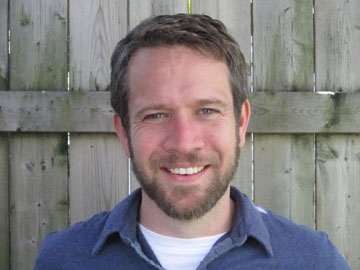Understanding Kerney’s $1.03 Million Research Grant

Professor Ryan Kerney recently secured a $1,031,000 research grant (Photo courtesy of Gettysburg College)
By Aphra Murray, MS&T Editor
Biology Professor Ryan Kerney successfully applied for a $1,031,000 grant through the Gordon and Betty Moore foundation with a focus on the relationship between algae and salamander embryos, faculty meeting minutes show. The foundation, which deals largely with funding environmental conservation research and research projects focused on the Bay Area. There are, however, a number of grants available for basic and applied research.
While Kerney was working in Sri Lanka on work related to tropical frog embryos, an unexpected drought left no breeding tropical frogs to study, and lots of time to work on the grant proposal. So in Sri Lanka, Kerney put together a proposal that involved reaching out to a number of potential collaborates and experts on a number of techniques needed to advance the project.
The research that the grant focuses on is the endosymbiotic relationship between algal cells and salamander embryos (endo meaning a cell inside a cell, symbiosis meaning a biological interaction between the two organisms.) Work has already been done sequencing and characterizing the genes of interest in both the algae and the host, but Kerney is interested in seeing this work move towards imaging of this interaction.
This will be done by examining the transfer of chemicals and quantifying that movement, using techniques known as autoradiography and confocal Raman spectroscopy.
Given the complexity of this multi-faceted research, a large number of collaborators will be working on this project, including academics from Columbia University and Stony Brook University in New York. The grant will fund the use of these instruments, as well as research positions available for Gettysburg students over the next three summers and post-doc positions at the collaborating institutions.
Eventually, Kerney looks to understand how and why this endosymbiotic relationship exists through light sheer microscopy, a technique that will scan the embryos in order to resolve three dimensional images of the algae as it is distributed. This can then be expanded into a fourth dimension as these images are understood over time as well.
Overall, this presents a lot of opportunities for Kerney and potential student researches for collaborative science, in particular to work with experts in the microscopy and spectroscopy needed to delve deeper into this research topic.
